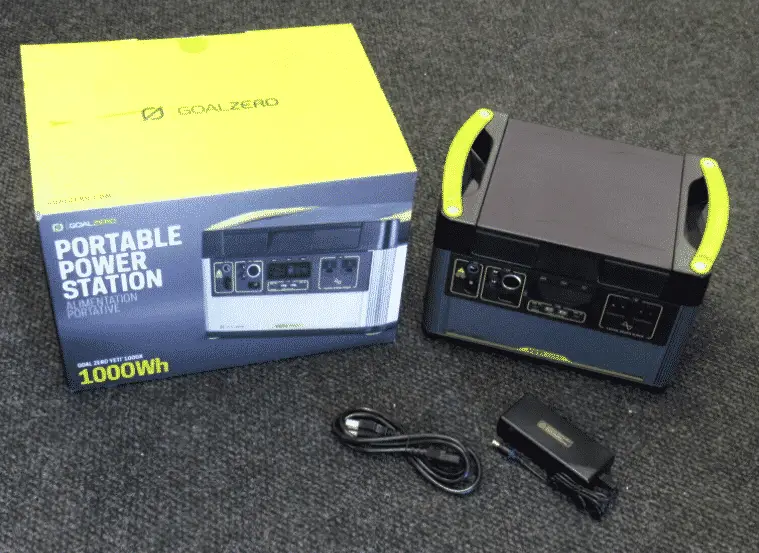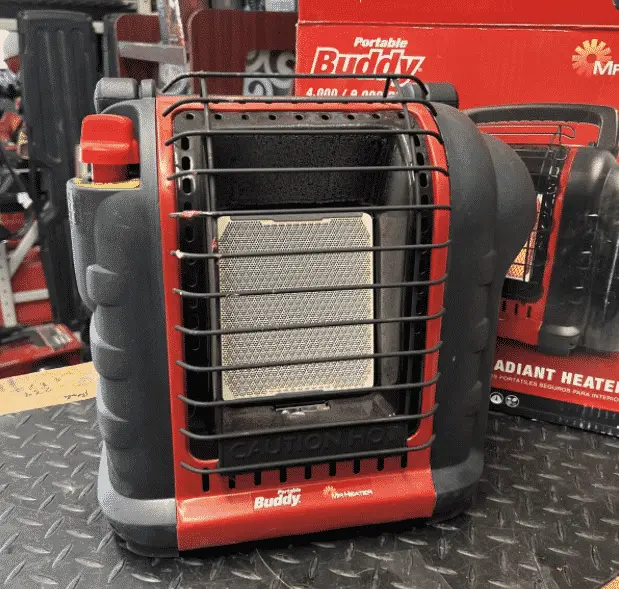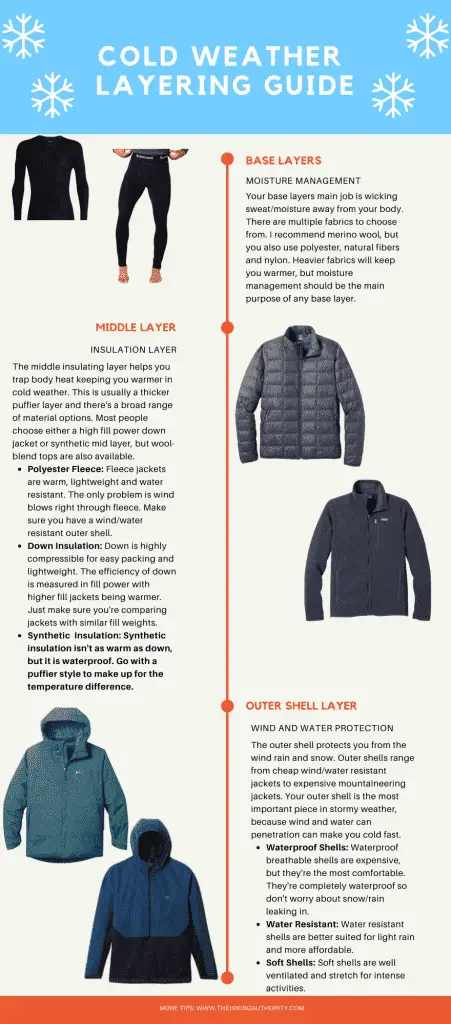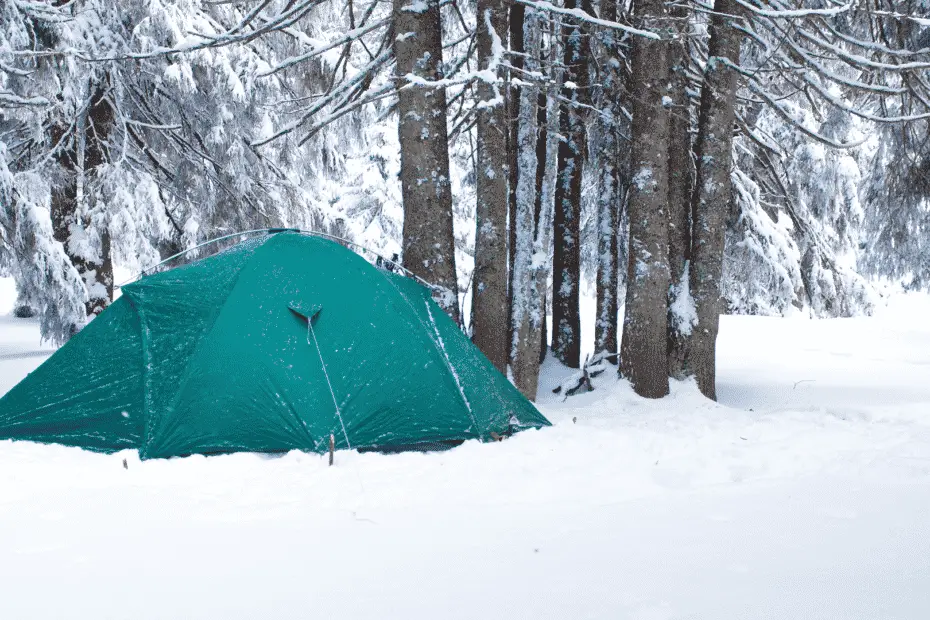As temperatures start to drop we all look for quick and easy ways to heat our campsite. Most of our warmth comes from choosing the right sleep system, but there are a few other ways to supplement heat in a campsite. I’ve been using portable propane heaters for years (Mr Heater), but what about battery powered options?
Can I use a battery powered tent heater? Heaters draw a lot of power so your options are limited with battery powered tent heaters. You can use a portable power station to power a low wattage heater, but it’s an expensive setup. I’ll describe this kind of setup below, but it’s out of most peoples price range.
Battery powered tent heaters would be perfect for camping, but unfortunately we’re limited by the current battery technology. It would require a ridiculously high capacity battery to run a heater. Don’t even think about running a full-sized space heater, but there is a way to run a battery powered cubicle heater in your tent.
It won’t be cheap, but you can run a low wattage 100-300 watt heater (like this) and high capacity power station (Jackery 1500). From there you would need a powerful solar setup which would make it even more expensive.
As you can see that’s way more than most people are willing to spend, but I’ll walk you through your options below. Most people are better off with a propane heater (like this one), because it’s way out of 99% of peoples price range.
Table Of Contents
Can You Use A Battery Powered Heater In A Tent?
Unfortunately, there aren’t any dedicated battery powered camping heaters currently on the market. The only option is to buy a high battery capacity portable power station to use with a low wattage heater.
There’s no easy way to use a full sized electric heater in a tent without a generator or electrical access. Electric heaters burn through way too much power to be an effective option for campers. A typical electric space heater uses 1000-1500 watts of electricity. Commercial power stations could handle that for a few hours, but you would need to spend about $5,000.
That’s way out of my price range, but there are low wattage heaters that you can use. Pairing a low wattage cubicle heater with a high battery capacity power station would allow you to heat your tent for a few hours. The Honeywell Heatbud Cubicle Heater and Goal Zero Yeti 1000 is what I use.
That gives you 3 hours of power on the 300 Watt high setting and 10 hours on the 100 Watt low setting. The hi
Using A Portable Power Station As A Battery Powered Tent Heater

When I first started looking at portable power inverters I was convinced that I’d be able use a heater inside my tent. I was already looking at portable power stations to take tailgating so I ended up buying a Goal Zero Yeti 1000 portable power station. It wasn’t cheap, but I would compare it to a high end consumer grade model.
It was the perfect power station for tailgating. I was able to run a tv, radio, and electric grill, during the Ohio State games so it was perfect for me. After using it a few times I decided to test my luck with a heater. A big space heater won’t work, but a low wattage cubicle heater works surprisingly well.
My Goal Zero Yeti 1000 power station has a 983 watt hour battery so I needed to find a low wattage heater. I ended up following a friend advice and bought a Honeywell Heatbud Cubicle Heater. After doing the math I figured the 300 Watt High Setting would only give 3 hours of heat, but the 100 watt low setting looked promising at 10 hours.
After testing it out I learned that 300 watts is plenty of power to heat up a tent, but the 100 Watt low setting doesn’t cut it. It rose the temperature maybe 10°F (if that), but that’s enough to take the chill off. I recently learned that a typical person release 100 Watts of heat per hour if that puts it into perspective.
Looking back I should have saved up some money for the Jackery 1500 which would have ran for over 5 hours, but it’s hard to justify the price. Three hours of heat is long enough to hang out and read my book before bed. It would be nice to be able to run the heater longer, but my sleeping bag/pad setup is on point so I’m not cold at night anyway.
My next step will be purchasing a solar setup so I can charge it for multi-day camping trips. That won’t be cheap either so who knows when that will happen.
Consider Using An Electric Blanket Instead
Powering an electric blanket requires far less power than a tent heater. A typical electric blanket uses 140 Watts of power per hour. So my Goal Zero Yeti 1000 (983 Watt Hour) can power an electric blanket for just over 7 hours.
I use a Degrees Of Comfort Heating Blanket that I picked up off Amazon. The king size blanket has 100 watt draw, but the twin is closer to 100 Watts. Taking the blanket off of high power will reduce the amount of time the blankets on to extend your battery life.
I have no idea what the average draw is with settings turned down, but I can easily get 2 nights out of heat with the heat set on medium. You wouldn’t want it any warmer than that anyway if you’re using it with a sleeping bag.
Can I Make A Battery Powered Heater Out Of Car Batteries?
You can technically run a low wattage heater off of car batteries with an inverter. There are 2 types of inverters, sine wave and modified sine wave. A sine wave inverter (like this one) is what you want since it’s similar to what you would get out of your houses power outlet.
Hook the automotive battery up to the sine wave inverter and you should have enough power to run a low wattage heater. Just make sure the heaters wattage falls into the safety rating of the inverter.
Once you did that you would get about 2 hours of power out of the 300 Watt Honeywell Cubicle Heater I used above. That might make sense if you have extra an extra car battery laying around, but it’s not really feasible for most people.
First off, that kind of setup would be a serious pain, but that’s not the biggest issue. Buying a car battery and inverter won’t be cheap and you could get a similar capacity portable power station at a comparable price point.
When you throw in the fact that draining car batteries down to zero charge damages the battery, and a typical car battery weighs 40 pounds it looks even worse. You carry it in your pack. So what’s the point?
It would be so much easier to run the heater off a gas/diesel powered generator, pay for class AA campsite with electric hookup, or use a propane camping heater (my favorite).
How To Use An Electric Heater In A Tent
Running an electric heater off battery power isn’t an option for most people. You would need to to use a crazy battery array and that would be more expensive than buying a high capacity portable power station.
Imagine hauling 4 car batteries into your tent, hooking them up in a parallel circuit, and running that to a power inverter. All that work so you can run a cubicle heater seems insane. Plus I’m pretty sure it’s dangerous to have that sitting right next to your bed. My golf cart battery caught on fire, because of a loose connection which wouldn’t be good in a tent.
That’s why almost every camping heater on the market uses a propane, butane, or kerosene power source. I would go with a propane heater, but there are ways to get electric to your tent without batteries. You just need to find a reliable external power source to run the heater.
There are two ways to run an electric heater inside a tent. You can either run the heater off a gas/diesel/propane generator or pay an extra $10-$20 per night for a class A campsite with an electric hookup.
Running a generator will be loud, so make sure the campground you’re staying at allows you to run a generator during quiet hours. Most campgrounds have noise restrictions after 10pm so they don’t allow generator usage after dark. If that’s the case, a class A site with an electric hookup is the only option.
You may want to check out my post explaining the difference between Class A, Class AA, Class AAA and Class B campsites.
Lightweight Heaters For Camping

Camping heaters should be one of your last purchases when looking at gear. They’re nice to have, but they’re not entirely necessary. You shouldn’t need a heater with the right sleep system (I’ll explain below), and properly layered clothing.
Check out my post on layering camping clothes for more info.
If you’ve given up on electric heaters, I recommend purchasing a portable propane heater. The portable Mr Heater is by far the best propane camping heater on the market. It’s lightweight, affordable, safe to use, and puts out plenty of heat.
A 1lb disposable tank of propane will last 8 hours on low, 4 hours on medium, and 2 hours on high. The low setting will be more than enough to take the chill out of a tent. I wouldn’t run it all night long, but it’s nice to have when you’re hanging out inside the tent.
Heating A Tent Without A Battery Powered Heaters
There’s no affordable way to heat up a tent outside of propane/butane/kerosene heaters or using an alternative electrical source with an electric heater. Choosing a proper sleep system, layering clothing, and finding alternative ways to heat your sleeping bag is a much better option.
4-Season Winter Tents Provide More Heat
Choosing a quality 4-Season tent would provide more ambient heat than using an electric heater. An electric heater can only provide so much warmth inside a tent. Tents aren’t designed to trap heat so you’ll be fighting a losing battle.
It will be warmer inside a tent, but 3-Season tents are designed to allow heat to escape. This is extremely important for preventing condensation issues. They will be about 5°F warmer than the outside air, but they don’t make a huge difference in warmth. That’s where your sleep system and clothing comes in.
You may want to consider a 4-Season winter tent if you’d like to increase the temperature inside your tent. A winter tent will be about 15°F warmer than the outside air. That will most likely be warmer than using an electric heater inside a 3-Season tent.
You Don’t Need A Heater With The Right Sleep System
There’s no excuse for being cold at night on a camping trip. Being cold at night is almost always the result of an inadequate sleep system. You can camp in any temperature range with the right sleeping bag and pad.
Your sleeping bag is the most important piece in your sleep system. Most cheap sleeping bags are unrated, but even rated bags are deceptive. Sleeping bag temperature ratings measure the safety rating of the bag instead of the comfort rating. You will be absolutely miserable if the temperature drops down to the advertised rating.
Choose a sleeping bag that’s 15°F warmer than the expected nighttime temperatures. So for a 50°F night you need a 35°F sleeping bag. You can use a sleeping bag liner and wear multiple layers of clothes to bed to pad your bags rating. Even a cheap Coleman liner adds 12°F to your bags temperature rating.
The right sleeping bag isn’t enough to keep you warm at night. You also need to choose a high R-Value sleeping pad. Aim for a 3-4 R-Value sleeping bag in spring/fall and 5+ R-Value sleeping pad in the winter.
Learn How To Layer Your Camping Clothes

Figuring out how to properly layer your camping clothes will make a huge difference on cold nights. You need to take a 3 stage approach to layering your clothes. Choose a moisture wicking base layer, warm insulating layer, and water/wind proof outer shell layer.
Pairing your layers with merino wool socks, and warm winter gloves/hats will solve 99% of problems. You probably won’t have to wear all three layers the entire trip. Peel off the outer shell layer in mild conditions and throw it back on when the rain/wind picks up.




